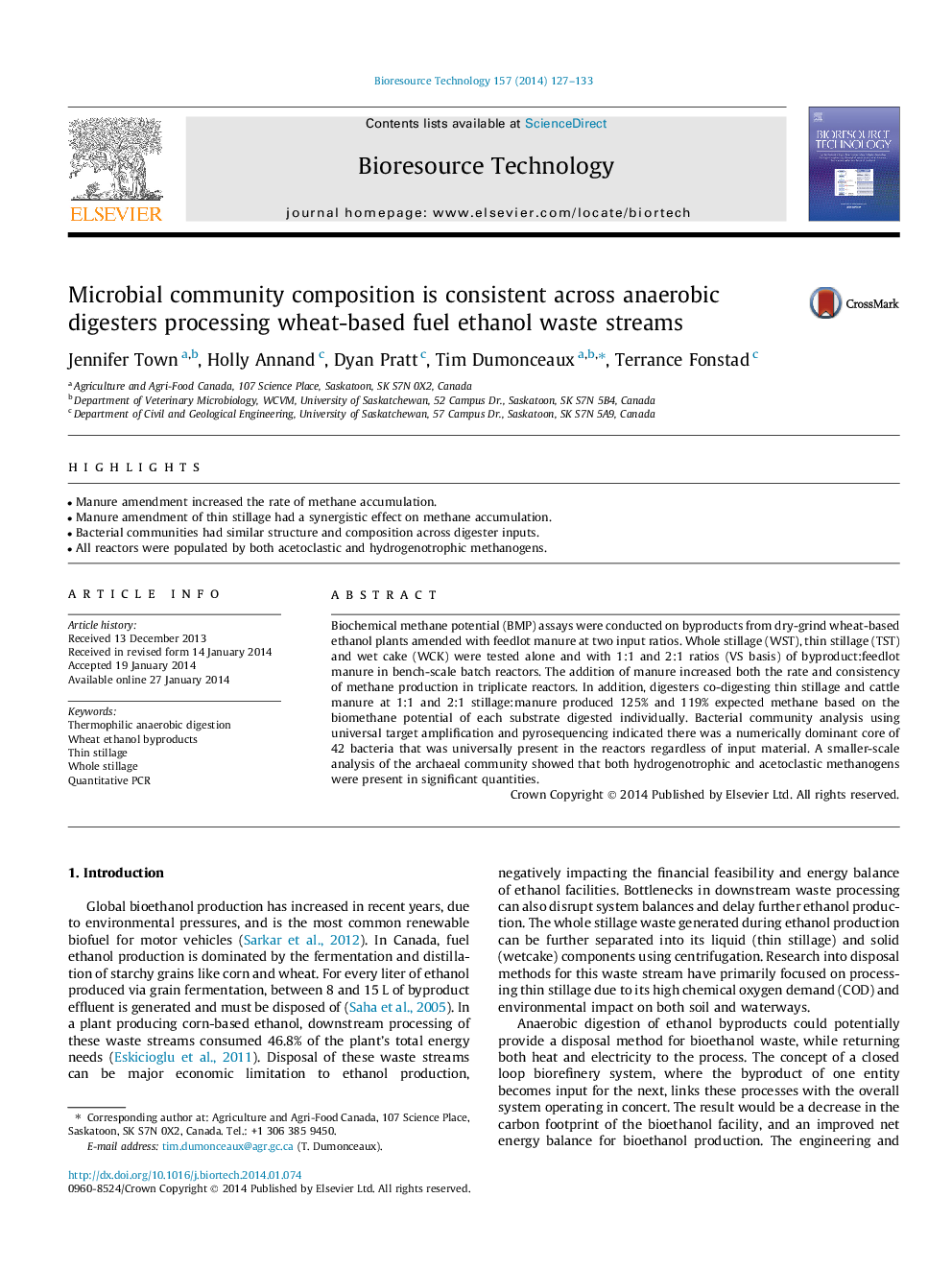| Article ID | Journal | Published Year | Pages | File Type |
|---|---|---|---|---|
| 680905 | Bioresource Technology | 2014 | 7 Pages |
•Manure amendment increased the rate of methane accumulation.•Manure amendment of thin stillage had a synergistic effect on methane accumulation.•Bacterial communities had similar structure and composition across digester inputs.•All reactors were populated by both acetoclastic and hydrogenotrophic methanogens.
Biochemical methane potential (BMP) assays were conducted on byproducts from dry-grind wheat-based ethanol plants amended with feedlot manure at two input ratios. Whole stillage (WST), thin stillage (TST) and wet cake (WCK) were tested alone and with 1:1 and 2:1 ratios (VS basis) of byproduct:feedlot manure in bench-scale batch reactors. The addition of manure increased both the rate and consistency of methane production in triplicate reactors. In addition, digesters co-digesting thin stillage and cattle manure at 1:1 and 2:1 stillage:manure produced 125% and 119% expected methane based on the biomethane potential of each substrate digested individually. Bacterial community analysis using universal target amplification and pyrosequencing indicated there was a numerically dominant core of 42 bacteria that was universally present in the reactors regardless of input material. A smaller-scale analysis of the archaeal community showed that both hydrogenotrophic and acetoclastic methanogens were present in significant quantities.
